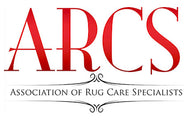Nap Reversal
One aspect of pile rugs that often gets overlooked but has a big impact on their appearance is the direction of the nap. When you run your hand back and forth across the surface of a rug you’ll notice that in one direction the rug feels smooth, while in the other direction it feels rough. This is because the pile of a rug doesn’t stand straight up but slants toward one end of the rug. This slant doesn’t just give rugs a tactile quality, but it has a noticeable impact on the colors of a rug because of how the pile reflects light If you stand at one end of a rug and look in the smooth direction, the colors will appear lighter, and if you look in the rough direction of the pile, the colors will appear darker.
Depending on the colors of your rug the lighting in your room and other factors you may have a preference for which way your rug pile is facing in your room. When a rug is new, the pile usually all slants in the same direction giving the pile and colors a uniform and even look. However, we rarely walk across a rug only in the same direction of the nap, we walk across them sideways and against the nap. Foot traffic also tends to follow patterns; we walk across a room the same way to sit on the couch or at a table or to get from one room to another.
Over time, foot traffic against or across the nap can cause the pile in those places to change direction and slant in a different direction from the rest of the rug. This is called nap reversal. Because the slant of the pile has such a noticeable impact on the colors, now when you look across the rug you may see sections where it looks like the colors are a bit different, this is sometimes called shading. When a rug is in use, nap reversal and the shading that can result may be hidden by dirt and furniture placement. Once the rug is cleaned they may be more noticeable and you might think they are a cleaning issue, but it takes time for them to develop.
A thorough cleaning will include grooming the pile to make it as uniform as possible. This can help mitigate nap reversal, but it often is permanent. These effects tend to be more obvious in rugs with a longer, thicker pile and that are a solid color. Depending on how you use your rug you may not be able to prevent nap reversal from happening, but there are a few steps you can take that will help delay it and minimize it’s appearance.
First, vacuum your rugs regularly to remove as much loose soil as possible. Second rotate your rug 180 degrees periodically so that foot traffic is being spread more evenly across the entire rug rather than wearing the same few places. Finally, getting your rug professionally cleaned regularly will help by removing as much soils as possible and also by grooming the pile.




